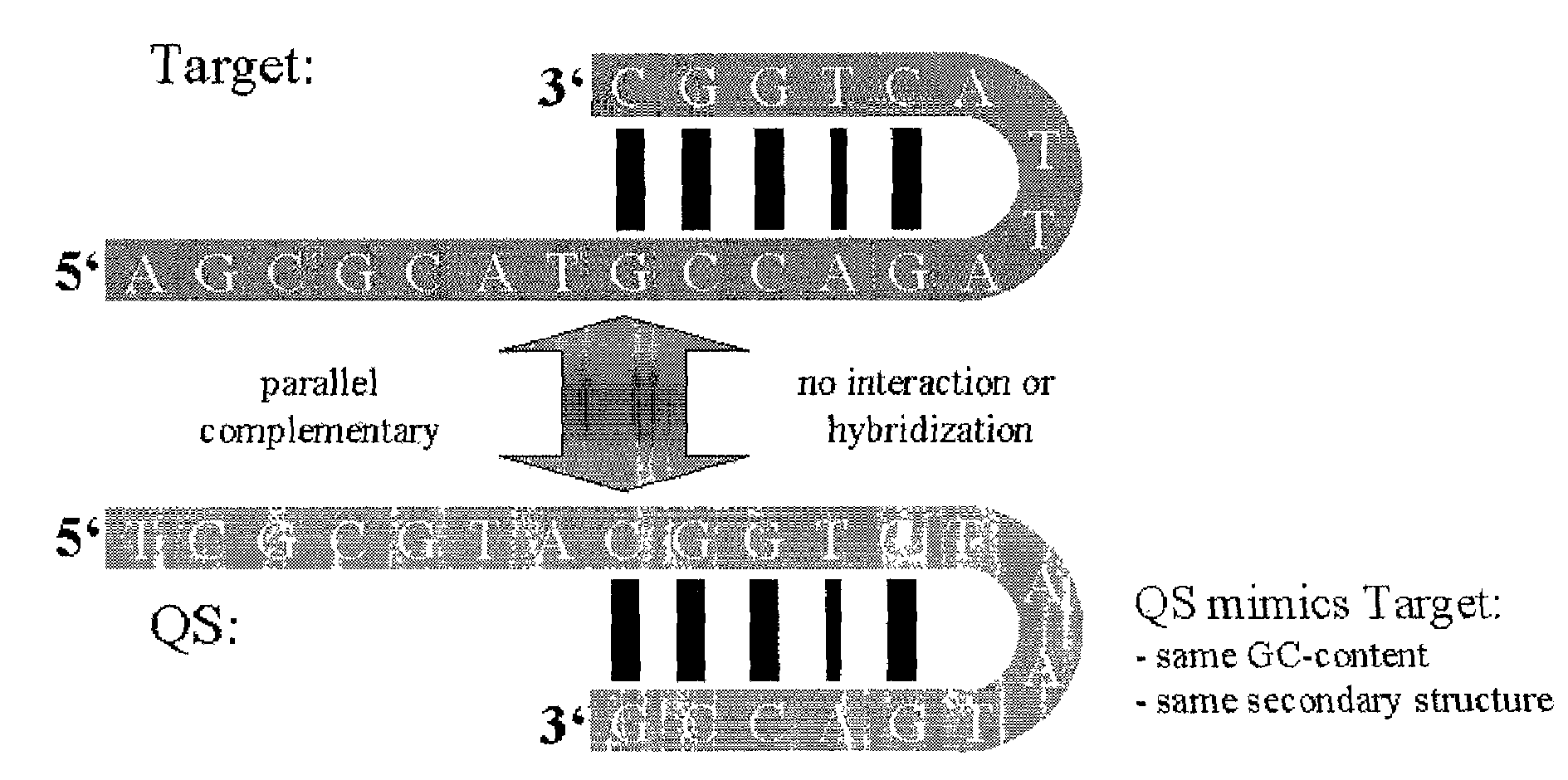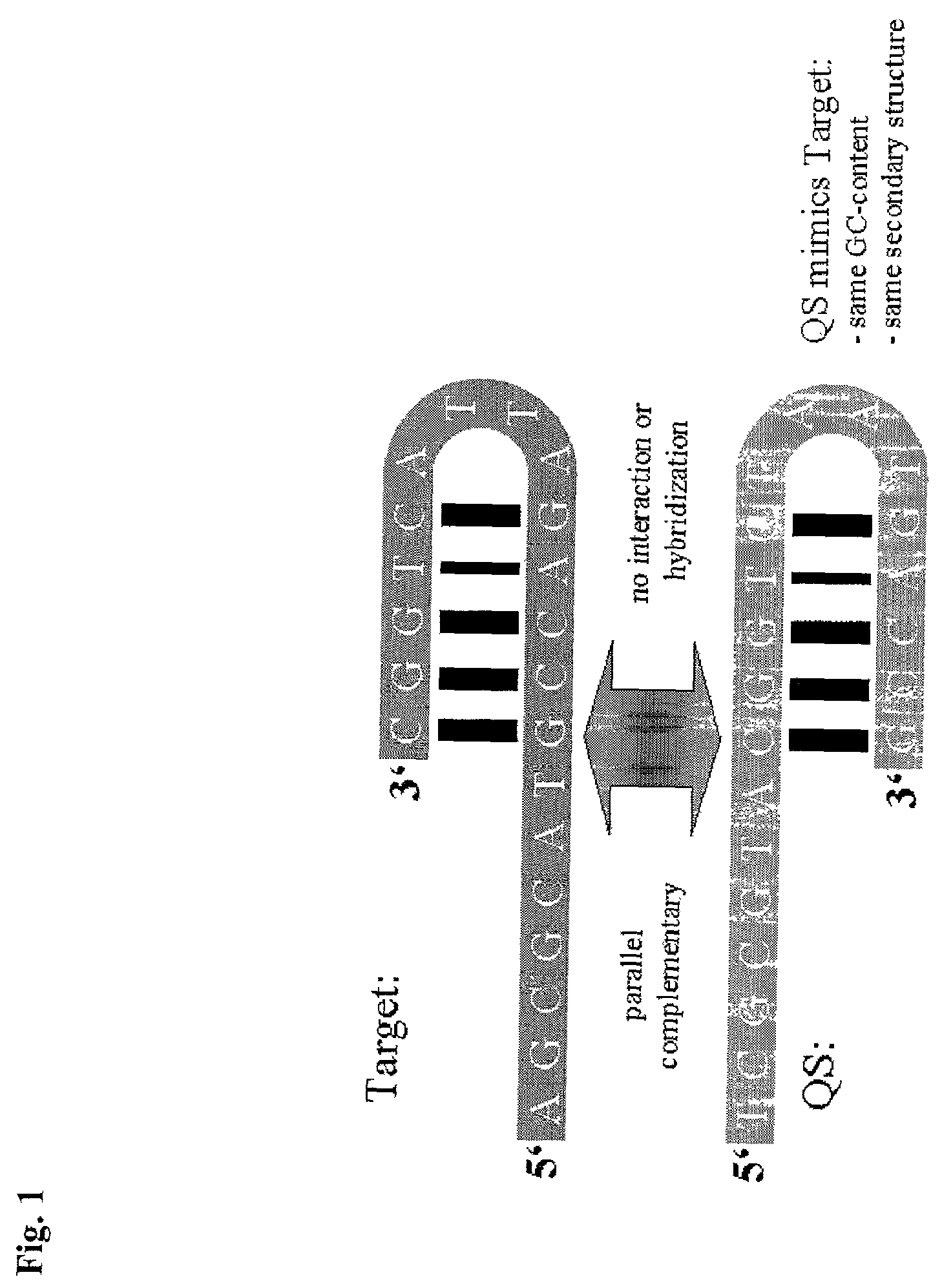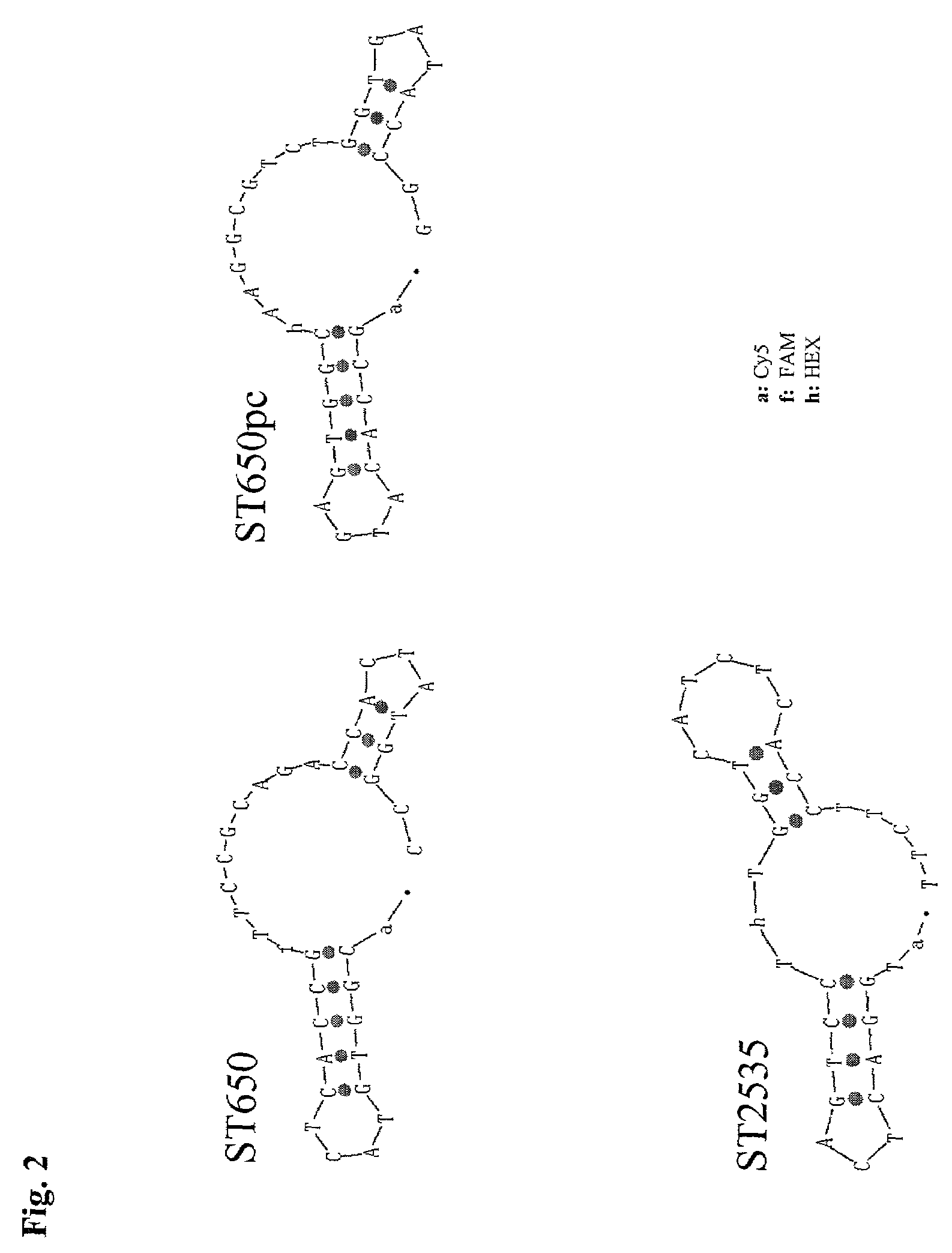Method for the determination of a nucleic acid using a control
a nucleic acid and control technology, applied in the field of nucleic acid determination, can solve the problems of false negative, inability to direct detection in a sample derived from an organism, and decrease in the sensitivity of the assay, so as to avoid control and improve the sensitivity and linear range of the assay.
- Summary
- Abstract
- Description
- Claims
- Application Information
AI Technical Summary
Benefits of technology
Problems solved by technology
Method used
Image
Examples
example 1
Design of a Probe Sequence, that is Parallel Complementary to the HCV Target Probe Sequence
[0074]For detection of HCV nucleic acid in a Taqman assay the following probe, binding to the HCV-amplicon (Seq. ID No. 10) can be used:
[0075]
ST650 (Seq. ID No 3):5′ (Cy5-) CGG TGT ACT CAC CG(FAMs) TTC CGC AGA CCA CTA TGG C-PO4-3′
Cy5: Oligonucleotid-derivatisation with Pentamethin-di-indocarbocyanin using Alkylphosphatidyl-Linker (Pharmacia Biotech Cy5-N-ethyl-Phosphoramidit)Fams: Oligonucleotid-derivatisation with 6-Carboxy-fluorescein using 2-(Amino-cyclohexyl-) propan-1,3-diol-Linker (Biogenex CX-FAM-Phosphoramidit)
[0076]All HCV specific sequences enclosed in this application are derived from the sequence of the HCV type I genome (NCBI, Genbank Accession No. AF054249 or AJ000009).
[0077]At best the probe for internal control detection mimics the target probe exactly, but is distinguishable of the target probe. The parallel complementary sequence of the target probe, called ST650pc (Seq. ID N...
example 2
Design of Primer Sequences, that are Parallel Complementary to the HCV Target Primer Sequences and Comparison of Likely Formed Secondary Structures Formed by Target Primers and Parallel Complementary Primers:
For amplification of HCV nucleic acid the following primers are used:
[0082]
ST280 (Seq ID No 6):5′ GCA GAA AGC GTC TAG CCA TGG CGT TA 3′ST778 (Seq ID No 7):5′ GCA AGC ACC CTA TCA GGC AGT ACC ACA A 3′
The parallel-complementary sequences of these amplification primers are
[0083]
ST280 pc (Seq ID No 8):5′ CGT CTT TCG CAG ATC GGT ACC TCA AT 3′ST778 pc (Seq ID No 9):5′ CGT TCG TGG GAT AGT CCG TCA TGG TGT T 3′
[0084]These designed internal primers are used for amplification of the internal control. Amplification of the internal control is non-competitive, since target and internal control use different primers for amplification. Nevertheless, the designed parallel complementary primers are structural very close to target primers, with regard to GC content, GC / AT sequence, length, secondar...
example 3
Construction of an Internal Control for Non-Competitive Qualitative and Quantitative Nucleic Testing of HCV, that is Parallel Complementary to HCV Sequence:
[0086]A double stranded DNA fragment was cloned, using overlapping oligonucleotides with a length of 60–120 b, that is parallel complementary to a 5′-fragment of HCV type I genome including the highly conserved 5′-UTR region. The synthesized and cloned fragment is 943 bp long and cloned into the BglII / HindIII site of an aRNA expression vector (AMBION, Austin, USA). Expression results in an armored RNA particle that contains RNA including the gene for MS-2 coat protein, MS-2 packaging signal and the parallel complementary sequence of 5′ HCV fragment. This RNA is distinguishable from the target, but due to parallel complementarity, GC-content and sequence of G or C and A or T nucleotides are identical to the corresponding HCV fragment, which are mainly influencing secondary structure. This construct is coamplified and detected in t...
PUM
| Property | Measurement | Unit |
|---|---|---|
| length | aaaaa | aaaaa |
| thermostable | aaaaa | aaaaa |
| concentration | aaaaa | aaaaa |
Abstract
Description
Claims
Application Information
 Login to View More
Login to View More - R&D Engineer
- R&D Manager
- IP Professional
- Industry Leading Data Capabilities
- Powerful AI technology
- Patent DNA Extraction
Browse by: Latest US Patents, China's latest patents, Technical Efficacy Thesaurus, Application Domain, Technology Topic, Popular Technical Reports.
© 2024 PatSnap. All rights reserved.Legal|Privacy policy|Modern Slavery Act Transparency Statement|Sitemap|About US| Contact US: help@patsnap.com










